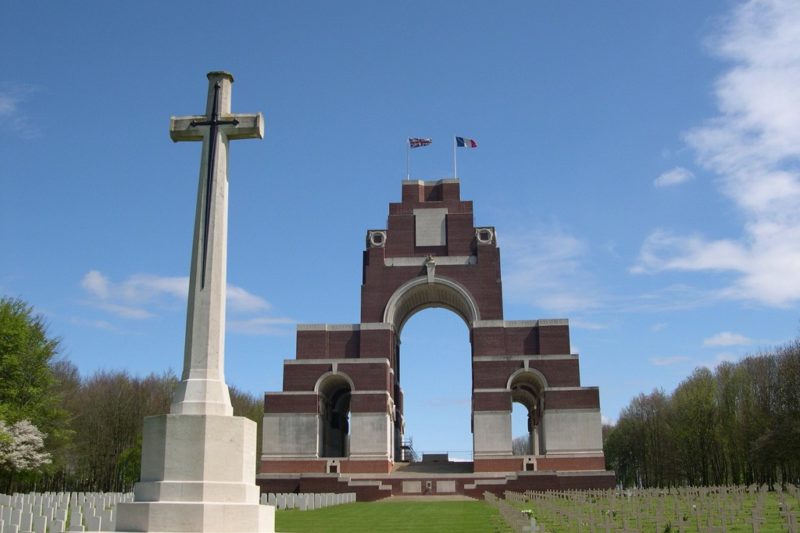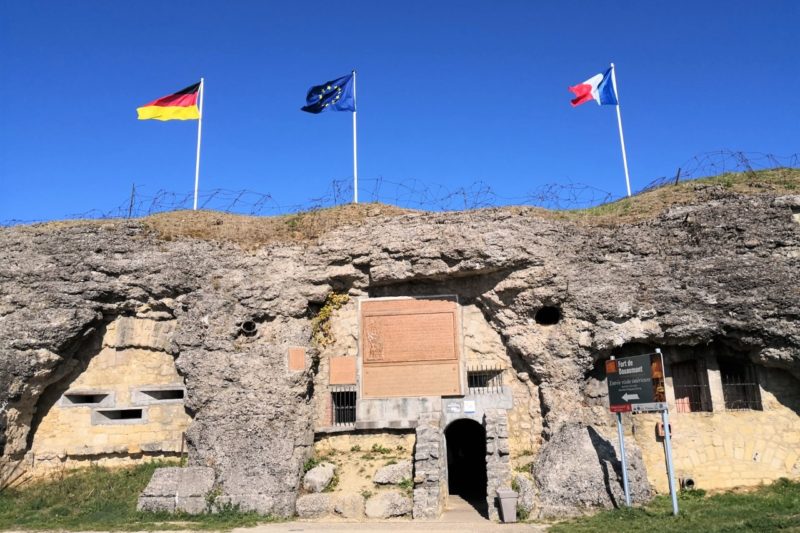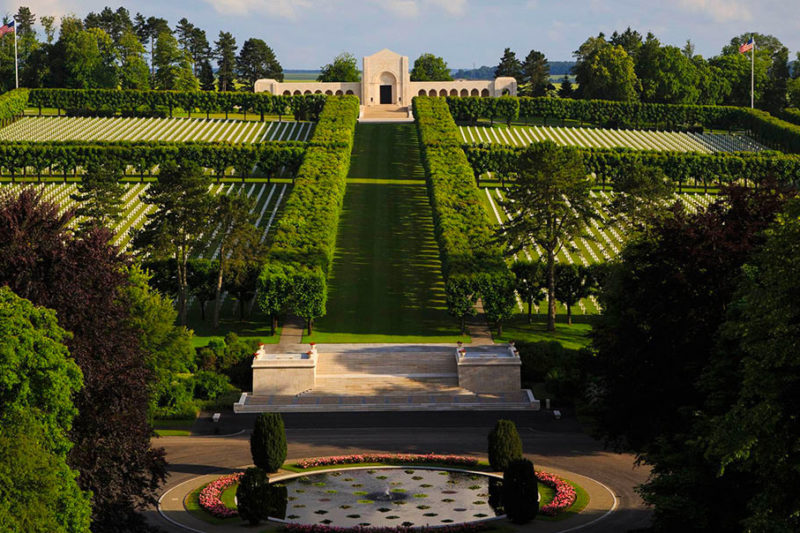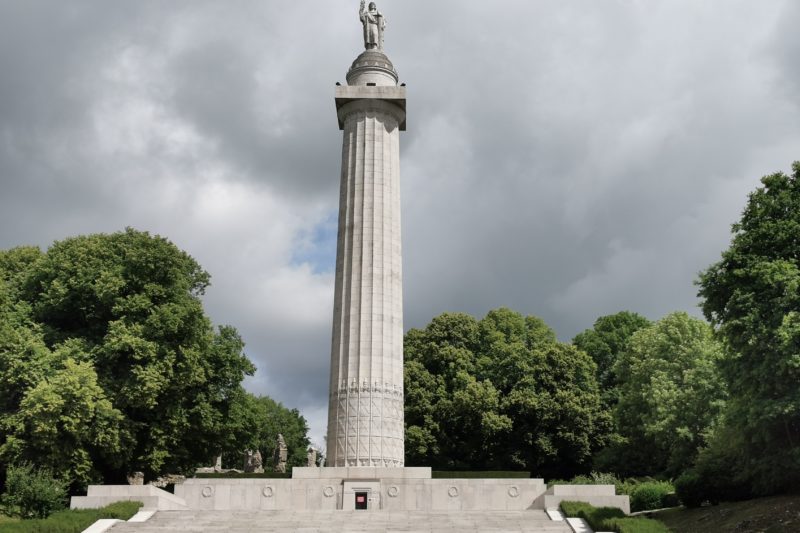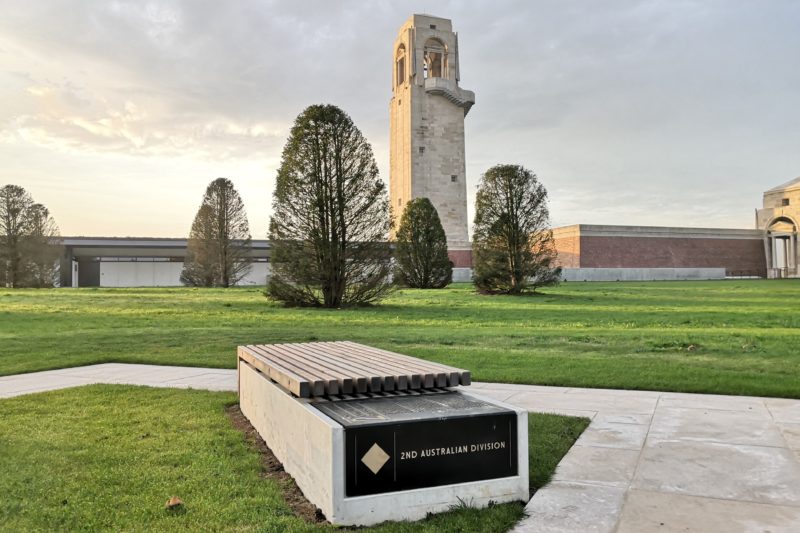Tour code : SOMME3
Somme 1918, Americans soldiers and the breaking of the Hindenburg Line
Day trip from Paris in a small group aboard a Minivan (max 7 pax)
- Information
- Tour Description
- Location
- Gallery
- Similar Tours
HIGHTLIGHTS
Aboard a minivan you will cross through villages and WW1 battlefields in the Somme and discover the visibles scars left by the war onto the landscapes after the battle for the breaking of the Hindenburg line in October 1918.
Pay your respects to the WW1 fallen soldiers while walking along the row of graves of the Somme American Military Cemetery
The Bellicourt American Monument was erected above a canal tunnel built by Napoleon I, it commemorates the achievements and sacrifices of the 90,000 American troops who served in battle with the British Armies in France during 1917 and 1918. On the terrace a balcony will enables you to contemplate a panoramic view towards the battlefield.
See this impressive 19th century canal tunnel (3,52 miles) which sheltered thousand of german soldiers during the fierces fighting for the breaking of the Hindenburg line by american soldiers in October 1918
Be amaze to visit the layout of the Historial of peronne Museum which combines a learning experience and emotion, taking visitors into the heart of the Great War.
THE PRICE INCLUDES
- Small group tour (Max 7 participants)
- Travel aboard an air-conditioning Minivan vehicle
- Guided sightseeing tour with English-speaking guide
- Admission tickets to the “Historial of Peronne” Museum
THE PRICE DOES NOT INCLUDES
- Hotel pick-up and drop-off
- Food and drinks
- Gratuities (optional)
- Introduction
- History of the Hindenburg Line
- Pickup in central Paris
- STOP 1 - American Military Cemetery in Bony (1hour)
- STOP 2 - Bellicourt American Monument (20mn)
- STOP 3 - Riqueval Towing Tunnel (30mn)
- STOP 4 - Riqueval Bridge (30mn)
- Stop 5 - Joncourt Bunker (10mn)
- STOP 6 - German War Cemetery, Maissemy (10mn)
- STOP 7 - Lunch Time in Péronne (01hour)
- STOP 8 - Historial of The Great War in Péronne (01hour)
- Return and drop off in central Paris
Come and join us for a day of remembrance and discover this large and very flat areas of farming lands. War cemeteries are standing everywhere in the fields and forever will testimony of the violence and bloody battles of the Great War.
To start your trip, you will be pickup by the driver guide in central Paris in front of the following adress: " LIDO DE PARIS 116 Av. des Champs-Élysées, 75008 Paris » at 06H40 in the morning aboard a comfortable minivan. Leaving Paris, we are now heading north towards the county of Somme in Picardy Region wich is Located at only two hours drive away from the french capital.
The Hindenburg Line comprised five operational zones, or Stellungen, which were named after figures of German mythology (from north to south): Wotan, Siegfried, Alberich, Brunhild, and Kriemhild. The most powerful of these sections was Siegfried which stretched 160 kilometres from Lens to Reims. It was built in just five months thanks to a massive workforce of more than 500,000 labourers including German civilians and Russian prisoners of war.
The defensive works comprised deep trenches (5 m deep, 4 m wide) and dugouts with bands of barbed wire entanglements at least twenty metres wide in front of the front line. The pillboxes and shelters were protected by reinforced concrete and sheets of steel. In addition, a line of more lightly defended outposts were built about three kilometres in front of the main line to slow down any Allied attack.
The battle zone proper, which was about two kilometres deep, was covered by a massive bank of big guns and machine-guns perfectly positioned to eliminate any advancing infantry. As the war progressed a series of anti-tank ditches were also dug in front of the front lines.
The Germans retreat towards the new defensive line took place in March 1917 so as to disrupt Nivelle's planned offensive, of which the German General Staff knew the main details. The Germans called their retreat Operation Alberich.
In 1918 the Hindenburg Line was the starting point of the Kaiserschlacht, the "emperor's battle", which the Germans launched on 21 March.
In September 1918 the Allies set forth with a huge number of tanks to break through the Hindenburg Line and by 10 October it had been completely overwhelmed. The Allied advance to victory was underway.
In the morning the driver guide will pick you up at 06:25 am at the following adress : LIDO DE PARIS 116 Av. des Champs-Élysées, 75008 Paris
(Easy to access by metro Line 1 and to get off at Metro station « George V »)
Your full-day history’ tour will begin in the areas of the Somme 1918 battlegrounds. First stop to visit the WW1 «Somme American Cemetery» in Bony.
The World War I Somme American Cemetery and Memorial in France is sited on a gentle slope typical of the open, rolling Picardie countryside. The 14.3-acre cemetery contains the graves of 1,844 of our military dead. Most lost their lives while serving in American units attached to British armies, or in operations near Cantigny. The headstones, set in regular rows, are separated into four plots by paths that intersect at the flagpole near the top of the slope. The longer axis leads to the chapel at the eastern end of the cemetery.
A massive bronze door surmounted by an American eagle leads into the chapel, whose outer walls contain sculptured pieces of military equipment. Once inside, light from a cross-shaped crystal window above the marble altar bathes the subdued interior with light. The walls bear the names of 333 of the missing. A rosette marks the name of the soldier listed on the Walls of the Missing that has since been recovered and identified.
The Bellicourt American Monument was erected above a canal tunnel built by Napoleon I, it commemorates the achievements and sacrifices of the 90,000 American troops who served in battle with the British Armies in France during 1917 and 1918. Engraved on the rear facade of the monument is a map illustrating the American operations; on the terrace is an orientation table.
The 27th and 30th Divisions came to the vicinity after fighting Belgium earlier in September 1918. The St. Quentin Canal Tunnel passes beneath Bellicourt and Bony. It was part of the Germans’ formidable Hindenburg Line, which was broken by the American troops in a brilliant offensive in September 1918. The Bellicourt Monument lies above the tunnel.
The 30th and 27th Divisions went into the line in adjoining zones of action on September 24 and 25 respectively, under tactical control of the Australian Corps. After actions in succeeding days, they participated in the main Allied offensive beginning on September 29.
Both the 27th and 30th Division engaged in heavy fighting with many casualties. Australian troops passed through the American divisions and continued the offensive. The 27th and 30th divisions were relieved from the vicinities of Bellicourt and the area west of Bony on September 30, 1918.
American casualties from fighting in this region are interred at the Somme American Cemetery near Bony, a mile to the northwest.
During the First World War the Germans turned this underground canal into a veritable barracks, with dressing stations dug out along the banks. The men slept in barges. In late September 1918 recapturing the tunnel was one of the highlights of the Battle for the Hindenburg line. Americans troops (US 30th Infantry Division)broke through the Hindenburg Line in the fog on 29th September 1918, entering Bellicourt, capturing the southern entrance of Bellicourt Tunnel and reaching the village of Nauroy.
In the surrounding area, the village of Bellicourt was the scene of very fierce fighting, to which several monuments pay tribute: a memorial in honour of the 2nd Corps of the American Army and an obelisk in memory of the 30th Division.
During the Battle of the Saint-Quentin Canal in September 29th 1918, the capture of Riqueval bridge was one the key objective to be retaken by the British Army.
Some men of the North Staffordshire Regiment (British 46th Infatry Division), led by Captain A. H. Charlton, managed to seize the still-intact Riqueval Bridge over the canal before the Germans had a chance to fire their explosive charges.
Once taken, on 29 September 1918, the Riqueval Bridge became a vital supply line over the St Quentin Canal for artillery, tanks, trucks and men.
Like a silent sentinel this bunker, which once formed part of the German Hindenburg Line defences, overlook the St Quentin Canal. It looks out across the fields of British victory from the final battle of the Great War on the Western in October 1918.
The German cemetery of Maissemy, is the second largest German military cemetery in France for the number of dead buried after that of Neuville-Saint-Vaast in Pas-de-Calais.
30,478 bodies are buried there, 15,478 in individual graves materialized by stone crosses (including 54 unidentified bodies) and 15,000 (of which 956 are identified) in two ossuaries.
The commemorative chapel contains a bronze sarcophagus topped with a mosaic of 340,000 pieces3. Large stone slabs, bordering the main aisle, bear the names and shields of the towns of the Ruhr basin that sponsored the construction of this necropolis.
The majority of the men buried in this cemetery were killed between late June and November 1916, the period of the Battle of the Somme, and in the spring and summer of 1918, during the Battle of the Kaiser and the Hundred Days Offensive that led to the victory of the Allies.In the afternoon, you will discover the town of Peronne where we will take a break for lunch in a local restaurant or you will just decides by yourself of your own choices of meals (own expense).
After lunch and, you will get a free access to explore the «Great War Historial and museum" in Péronne. A 13th century medieval castle house the WW1 museum which display a a large exhibits of uniforms and weapons all worn, designed and used by the soldiers during the conflict.
The historial of peronne museum also offers a permanent collection of Trench Artists such as « Otto Dix » who did testimony of the atrocities of the war with sketching some very graphic etchings.
Museum Layout
The Historial, Museum of the Great War in Péronne opened in 1992. A highly respected museum devoted to the history of the First World War, the Historial studies the full cultural, social and military scale of this important chapter of history.
The central part of each gallery pays testimony to life at the front, that which concerned every population at war the most.
Soldiers of various nationalities are represented by mannequins dressed in their uniforms with their weapons and personal effects by their sides. These bodies, lying in white marble pits cut out of the museum’s floor, symbolise the entire territory of the Somme riddled by trenches, and the common suffering of the men at war.
Weapons and military equipment are displayed in the centre of the galleries; placed on the ground, in pits, they pay testimony to the common suffering of the soldiers. The lives of the civilians, each and everyone ‘mobilised’ by war, are studied in the wall cabinets, divided into three sections and respectively dedicated to Germany, France and Great Britain.
During the return drive to Paris you will have time to relax aboard the minivan before to be dropped off in Central Paris (Drop off in front of the "LIDO DE PARIS 116 Av. des Champs-Élysées, 75008 Paris" in the evening between 06:30 pm till 07:30 pm).
Easy there to catch a taxi cab either to find metro station (Ligne 1 Métro : George V).

